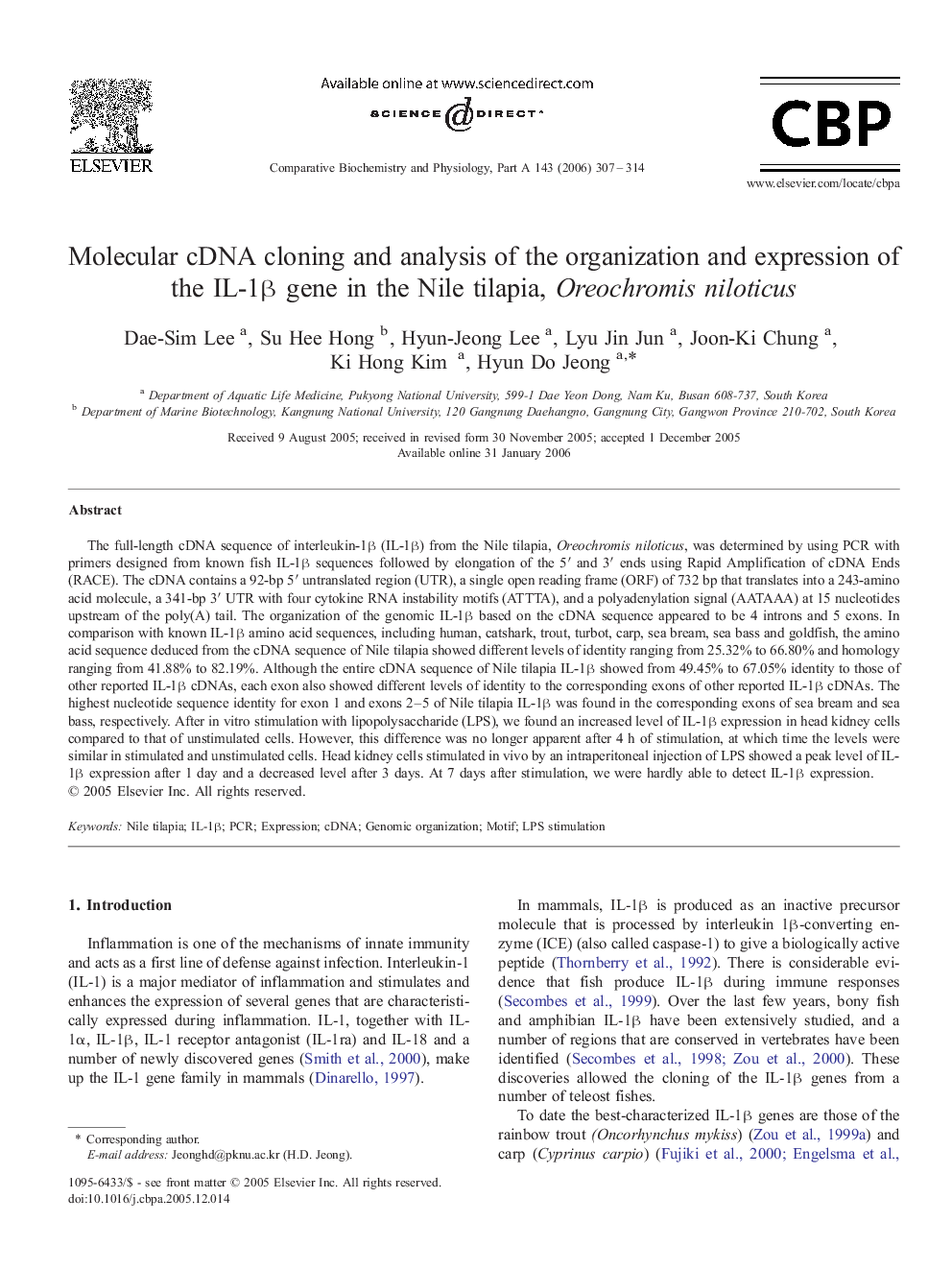| Article ID | Journal | Published Year | Pages | File Type |
|---|---|---|---|---|
| 1973943 | Comparative Biochemistry and Physiology Part A: Molecular & Integrative Physiology | 2006 | 8 Pages |
The full-length cDNA sequence of interleukin-1β (IL-1β) from the Nile tilapia, Oreochromis niloticus, was determined by using PCR with primers designed from known fish IL-1β sequences followed by elongation of the 5′ and 3′ ends using Rapid Amplification of cDNA Ends (RACE). The cDNA contains a 92-bp 5′ untranslated region (UTR), a single open reading frame (ORF) of 732 bp that translates into a 243-amino acid molecule, a 341-bp 3′ UTR with four cytokine RNA instability motifs (ATTTA), and a polyadenylation signal (AATAAA) at 15 nucleotides upstream of the poly(A) tail. The organization of the genomic IL-1β based on the cDNA sequence appeared to be 4 introns and 5 exons. In comparison with known IL-1β amino acid sequences, including human, catshark, trout, turbot, carp, sea bream, sea bass and goldfish, the amino acid sequence deduced from the cDNA sequence of Nile tilapia showed different levels of identity ranging from 25.32% to 66.80% and homology ranging from 41.88% to 82.19%. Although the entire cDNA sequence of Nile tilapia IL-1β showed from 49.45% to 67.05% identity to those of other reported IL-1β cDNAs, each exon also showed different levels of identity to the corresponding exons of other reported IL-1β cDNAs. The highest nucleotide sequence identity for exon 1 and exons 2–5 of Nile tilapia IL-1β was found in the corresponding exons of sea bream and sea bass, respectively. After in vitro stimulation with lipopolysaccharide (LPS), we found an increased level of IL-1β expression in head kidney cells compared to that of unstimulated cells. However, this difference was no longer apparent after 4 h of stimulation, at which time the levels were similar in stimulated and unstimulated cells. Head kidney cells stimulated in vivo by an intraperitoneal injection of LPS showed a peak level of IL-1β expression after 1 day and a decreased level after 3 days. At 7 days after stimulation, we were hardly able to detect IL-1β expression.
